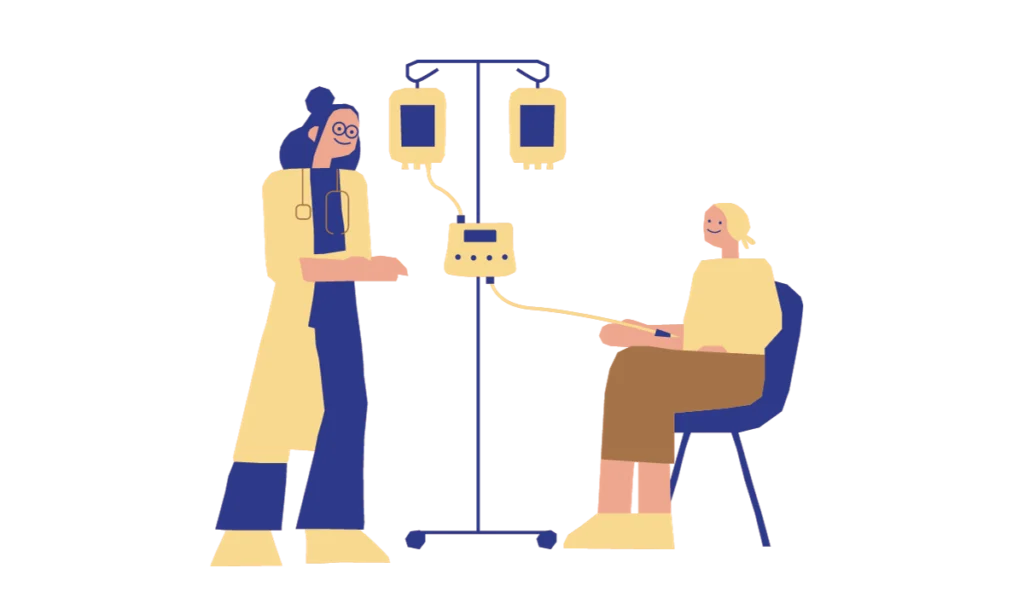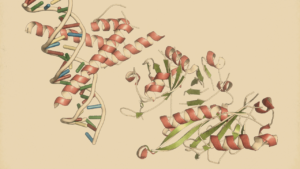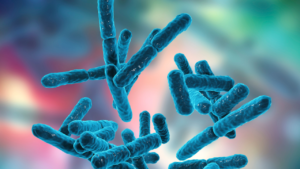2 Strategies to Treat Spinal Degenerative Diseases
Explore two effective strategies to alleviate Spinal Degenerative Diseases. Unlock the secrets to a pain-free life and boost your spinal health now!

In This Article:
Key Points
- The United States has a high annual prevalence of spinal degenerative diseases (SDD) among its aging population, with SDD including a range of conditions caused by the degeneration of spinal structures.
- Key risk factors for SDD include aging, heavy labor, trauma, genetics, obesity, and metabolic syndrome, with these conditions significantly impacting patients' lives and society in terms of quality of life and economic burden.
- Metabolic syndrome, characterized by insulin resistance, obesity, vascular pathology, and dyslipidemia, can lead to "meta-inflammation" and contribute to the development of SDD.
- Recent studies have highlighted the role of gut microbiota (GM) in various metabolic, immune, structural, and neurological functions, with disruptions in GM linked to inflammatory diseases, obesity, and metabolic syndrome, all of which can contribute to SDD.
- The future of SDD research looks promising, with the potential for innovative preventive and therapeutic interventions based on the relationship between GM, immunity, metabolism, and inflammation.
Introduction
The United States sees a 27.1% annual prevalence of spinal degenerative diseases (SDD) among its aging population A Trusted Source Parenteau, C. S., Lau, E. C., Campbell, I. C., and Courtney, A. (2021). Prevalence of spine degeneration diagnosis by type, age, gender, and obesity using Medicare data.Sci. Rep.11:5389. doi: 10.1038/s41598-021-84724-6 PubMed AbstractCrossRef Full TextGoogle Scholar .
SDD is a collection of diseases caused by the degeneration of spinal structures, including bones, cartilages, intervertebral disks, ligaments, and muscles.
Examples include osteoporotic vertebral fractures, facet joint osteoarthritis, intervertebral disk degeneration, lumbar spinal canal stenosis, and spinal sarcopenia.
These conditions often coexist and worsen with age, leading to a cycle of negative health impacts.

Key Risk Factors and Impacts of SDD
Research has identified aging, heavy labor, trauma, genetics, obesity, and metabolic syndrome as primary risk factors for SDD A Trusted Source Azzini, G. O. M., Santos, G. S., Visoni, S. B. C., Azzini, V. O. M., Santos, R. G. D., Huber, S. C., et al. (2020). Metabolic syndrome and subchondral bone alterations: the rise of osteoarthritis - a review.J. Clin. Orthop. Trauma11, S849–S855. doi: 10.1016/j.jcot.2020.06.021PubMed AbstractCrossRef Full TextGoogle Scholar A Trusted Source Li, W., Lai, K., Chopra, N., Zheng, Z., Das, A., and Diwan, A. D. (2022). Gut-disc axis: a cause of intervertebral disc degeneration and low back pain.Eur. Spine J.31, 917–925. doi: 10.1007/s00586-022-07152-8 PubMed AbstractCrossRef Full TextGoogle Scholar .
The pain and paralysis resulting from SDD have a significant impact on patients' lives, families, and society at large, both in terms of quality of life and economic burden A Trusted Source Imajo, Y., Taguchi, T., Yone, K., Okawa, A., Otani, K., Ogata, T., et al. (2015). Japanese 2011 nationwide survey on complications from spine surgery.J. Orthop. Sci.20, 38–54. doi: 10.1007/s00776-014-0656-6 PubMed AbstractCrossRef Full TextGoogle Scholar .
Understanding the causes of SDD, which range from biomechanical injury to biochemical stress, is crucial for developing preventive and therapeutic measures.
Metabolic Syndrome: A Key Factor in SDD
Metabolic syndrome encompasses insulin resistance, obesity, vascular pathology, and dyslipidemia A Trusted Source Azzini, G. O. M., Santos, G. S., Visoni, S. B. C., Azzini, V. O. M., Santos, R. G. D., Huber, S. C., et al. (2020). Metabolic syndrome and subchondral bone alterations: the rise of osteoarthritis - a review.J. Clin. Orthop. Trauma11, S849–S855. doi: 10.1016/j.jcot.2020.06.021PubMed AbstractCrossRef Full TextGoogle Scholar .
This condition can lead to "meta-inflammation," a low-grade systemic inflammation that adds biochemical stress to tissues and can contribute to the development of SDD.
Inflammaging, a chronic, low-level inflammation associated with aging, has also been linked to osteoporosis, intervertebral disk degeneration, and other degenerative conditions A Trusted Source Zaiss, M. M., Jones, R. M., Schett, G., and Pacifici, R. (2019). The gut-bone axis: how bacterial metabolites bridge the distance.J. Clin. Invest.129, 3018–3028. doi: 10.1172/JCI128521 PubMed AbstractCrossRef Full TextGoogle Scholar .
The Gut Microbiota (GM) Connection with SDD
Recent studies have brought attention to the role of gut microbiota (GM) in metabolic, immune, structural, and neurological functions, with disruptions in GM linked to inflammatory diseases, obesity, and metabolic syndrome A Trusted Source Biver, E., Berenbaum, F., Valdes, A. M., Araujo de Carvalho, I., Bindels, L. B., Brandi, M. L., et al. (2019). Gut microbiota and osteoarthritis management: an expert consensus of the European society for clinical and economic aspects of osteoporosis, osteoarthritis and musculoskeletal diseases (ESCEO).Ageing Res. Rev.55:100946. doi: 10.1016/j.arr.2019.100946PubMed AbstractCrossRef Full TextGoogle Scholar .
These disruptions can result in the production of inflammatory cytokines and bacterial metabolites involved in the pathophysiology of musculoskeletal diseases, including SDD.
Additionally, several axes, such as gut-bone, gut-joint, gut-disk, and gut-muscle, have been identified, showcasing the intricate relationship between GM and various spinal conditions A Trusted Source Romero-Figueroa, M. D. S., Ramírez-Durán, N., Montiel-Jarquín, A. J., and Horta-Baas, G. (2023). Gut-joint axis: gut dysbiosis can contribute to the onset of rheumatoid arthritis via multiple pathways.Front. Cell. Infect. Microbiol.13:1092118. doi: 10.3389/fcimb.2023.1092118 CrossRef Full TextGoogle Scholar .
A Look at the Future of SDD Research
The close relationship between GM, immunity, metabolism, and inflammation presents an opportunity for further research into the involvement of GM in the degeneration of spinal structures and SDD.
With the potential for GM to be a key mechanism in the development of SDD, future studies could pave the way for innovative preventive and therapeutic interventions.

SDD Treatments: Harnessing the Power of Gut Microbiota
The prevalence of spinal degenerative diseases (SDD) globally demands innovative treatment strategies.
Research shows that gut microbiota (GM) plays a pivotal role in SDD progression through various gut-spinal axes, impacting bones, cartilage, disks, ligaments, and muscles.
Dysbiosis in GM can lead to chronic inflammation, and worsening SDD symptoms including osteoporosis, intervertebral disk degeneration (IVDD), and osteoarthritis (OA).
On the flip side, therapeutic interventions that restore GM balance can prevent and mitigate SDD progression.
Lifestyle changes, like improved diet, regular exercise, and adequate sleep, alongside cutting-edge microbiome-targeted therapies and fecal transplants, are promising avenues for GM modulation in treating SDD A Trusted Source Kolasinski, S. L., Neogi, T., Hochberg, M. C., Oatis, C., Guyatt, G., Block, J., et al. (2020). 2019 American College of Rheumatology/Arthritis Foundation guideline for the management of osteoarthritis of the hand, hip, and knee.Arthritis Rheumatol.72, 220–233. doi: 10.1002/art.41142 PubMed AbstractCrossRef Full TextGoogle Scholar .
Power of Gut Microbiota for Spinal Health: A Lifestyle Approach
Bridging the Gap between Lifestyle and Spinal Degenerative Diseases (SDD)
A healthy lifestyle, encompassing balanced nutrition, sufficient sleep, and regular exercise, has been shown to improve the composition of gut microbiota (GM) and consequently mitigate symptoms of SDD A Trusted Source Li, W., Lai, K., Chopra, N., Zheng, Z., Das, A., and Diwan, A. D. (2022). Gut-disc axis: a cause of intervertebral disc degeneration and low back pain.Eur. Spine J.31, 917–925. doi: 10.1007/s00586-022-07152-8 PubMed AbstractCrossRef Full TextGoogle Scholar .
By fostering the growth of beneficial bacteria, these lifestyle changes can alleviate inflammation, thereby halting the degeneration of spinal structures and reducing pain through short-chain fatty acids (SCFAs) or neurotransmitter activity.
The dynamic interaction between lifestyle factors and GM highlights the importance of holistic wellness in preventing and treating SDD.
Harnessing the Power of Prebiotics and Probiotics
Prebiotics, consisting of non-digestible food components like dietary fiber, fuel the growth of beneficial bacteria in the digestive tract.
They facilitate the synthesis of SCFAs, impacting cell growth and inflammation regulation A Trusted Source Zhang, Y. W., Cao, M. M., Li, Y. J., Dai, G. C., Lu, P. P., Zhang, M., et al. (2022a). The regulative effect and repercussion of probiotics and prebiotics on osteoporosis: involvement of brain-gut-bone axis.Crit. Rev. Food Sci. Nutr.63, 7510–7528. doi: 10.1080/10408398.2022.2047005 PubMed AbstractCrossRef Full TextGoogle Scholar .
Probiotics, live microorganisms often found in fermented foods, help maintain a balanced GM by enhancing epithelial barrier function and inhibiting the production of bacterial toxins.
This aids in promoting immune responses and anti-inflammatory pathways A Trusted Source Vitetta, L., Coulson, S., Linnane, A. W., and Butt, H. (2013). The gastrointestinal microbiome and musculoskeletal diseases: a beneficial role for probiotics and prebiotics.Pathogens2, 606–626. doi: 10.3390/pathogens2040606 PubMed AbstractCrossRef Full TextGoogle Scholar .
Both prebiotics and probiotics have been documented to foster calcium and vitamin D absorption, inhibit osteoclast differentiation, and protect bone and cartilage, thereby exhibiting beneficial effects on osteoporosis and OA.

The Role of Exercise in Promoting Spinal Health
Exercise has been identified as a crucial factor in improving skeletal muscle mass and GM composition.
Specifically, the 'gut-muscle' axis is of interest, as it links improvements in spinal sarcopenia to regular physical activity A Trusted Source Locantore, P., Del Gatto, V., Gelli, S., Paragliola, R. M., and Pontecorvi, A. (2020). The interplay between immune system and microbiota in osteoporosis.Mediat. Inflamm.2020:3686749. doi: 10.1155/2020/3686749 PubMed AbstractCrossRef Full TextGoogle Scholar .
In essence, regular exercise can foster a positive cycle, improving GM composition and, in turn, spinal structures.
Impact of Sleep on Spinal Health
While the relationship between sleep disturbances, GM dysbiosis, and SDD is yet to be thoroughly explored, existing studies suggest that healthy sleep patterns can contribute to mitigating symptoms of SDD.
Sleep disturbances have been linked to decreased bacterial diversity in the intestine, which can trigger systemic chronic inflammation, a known risk factor for SDD A Trusted Source Vich Vila, A., Collij, V., Sanna, S., Sinha, T., Imhann, F., Bourgonje, A. R., et al. (2020). Impact of commonly used drugs on the composition and metabolic function of the gut microbiota.Nat. Commun.11:362. doi: 10.1038/s41467-019-14177-z PubMed AbstractCrossRef Full TextGoogle Scholar .
The Interplay between GM and Drug Metabolism
GM has a profound impact on the metabolism of drugs, which can, in turn, affect their efficacy.
By modulating GM through lifestyle interventions, the efficacy of analgesics can be enhanced, potentially leading to a reduction in drug dosage.
This is particularly relevant for older individuals with SDD, who often face the challenge of polypharmacy.

Fecal Microbiome Transplants (FMT) for Health Restoration
A Dynamic Solution for Gut Health
Fecal microbiome transplants (FMT) offer a revolutionary approach to rectify gut microbiota (GM) dysbiosis-related conditions.
By transferring healthy donor stool to the recipient, FMT re-establishes the balance of intestinal bacteria, addressing various inflammatory conditions such as acute inflammation (Clostridioides difficile infection), chronic inflammation (Crohn’s disease, ulcerative colitis), and chronic low-grade inflammation A Trusted Source Wang, Y., Zhang, S., Borody, T. J., and Zhang, F. (2022). Encyclopedia of fecal microbiota transplantation: a review of effectiveness in the treatment of 85 diseases.Chin. Med. J.135, 1927–1939. doi: 10.1097/CM9.0000000000002339 PubMed AbstractCrossRef Full TextGoogle Scholar .
FMT: Beyond Probiotics and Prebiotics
Contrary to single-microorganism-targeting solutions like probiotics and prebiotics, FMT preserves the entirety of GM and its metabolites, thereby ensuring the optimal functioning of GM and swiftly restoring gut microenvironmental homeostasis A Trusted Source Zhang, Y. W., Cao, M. M., Li, Y. J., Zhang, R. L., Wu, M. T., Yu, Q., et al. (2022b). Fecal microbiota transplantation as a promising treatment option for osteoporosis.J. Bone Miner. Metab.40, 874–889. doi: 10.1007/s00774-022-01375-xPubMed AbstractCrossRef Full TextGoogle Scholar .
The Far-Reaching Impacts of FMT
FMT has demonstrated efficacy across a spectrum of diseases, encompassing gastrointestinal diseases (Clostridioides difficile infection, Crohn’s disease, ulcerative colitis), liver diseases (severe alcoholic hepatitis, primary sclerosing cholangitis, liver cirrhosis), brain disorders (autism, Parkinson’s, multiple sclerosis, Alzheimer’s, epilepsy), metabolic conditions (diabetes, obesity, metabolic syndrome, gout), and even cancer (melanoma, gastroesophageal cancer).
FMT's Role in Spinal Health
Specifically for spinal health, FMT has proven beneficial for inflammatory, immune, or metabolic spinal disorders such as osteoporosis, psoriatic arthritis, and axial arthritis A Trusted Source Selvanderan, S. P., Goldblatt, F., Nguyen, N. Q., and Costello, S. P. (2019). Faecal microbiota transplantation forClostridium difficileinfection resulting in a decrease in psoriatic arthritis disease activity.Clin. Exp. Rheumatol.37, 514–515.PubMed AbstractGoogle Scholar A Trusted Source Mahajan, R., Midha, V., Singh, A., Mehta, V., Gupta, Y., Kaur, K., et al. (2020). Incidental benefits after fecal microbiota transplant for ulcerative colitis.Intest. Res.18, 337–340. doi: 10.5217/ir.2019.00108 PubMed AbstractCrossRef Full TextGoogle Scholar .
While its impact on other spinal degenerative diseases (OA, IVDD, LSS, spinal sarcopenia) remains unexplored, the potential normalization of GM could play a pivotal role in preventing, treating, and ameliorating these conditions.
Discussion
- The high prevalence of SDD in the aging population of the United States highlights the need for comprehensive research and innovative treatment strategies.
- Key risk factors such as aging, genetics, heavy labor, obesity, and metabolic syndrome play a significant role in the development and progression of SDD.
- Metabolic syndrome and its associated "meta-inflammation" can significantly contribute to the development of SDD, further emphasizing the need for holistic approaches to treatment.
- The interconnected relationship between gut microbiota (GM) and various spinal conditions opens up new avenues for research and potential treatments.
- The impact of lifestyle factors such as diet, exercise, and sleep on GM composition and, consequently, on SDD symptoms should not be underestimated.
Conclusion
- There is a clear need for further research to fully understand the complexities of SDD and its various contributing factors.
- The relationship between GM and SDD offers promising potential for innovative preventive and therapeutic interventions.
- Holistic approaches that incorporate lifestyle changes and microbiome-targeted therapies could significantly improve the quality of life for individuals with SDD.
- The potential benefits of fecal microbiome transplants (FMT) in treating SDD are particularly intriguing and warrant further exploration.
- Overall, the future of SDD research and treatment is promising, with numerous opportunities for groundbreaking discoveries and advancements in patient care.
Review date not set.
How we reviewed this article:
Latest on:





